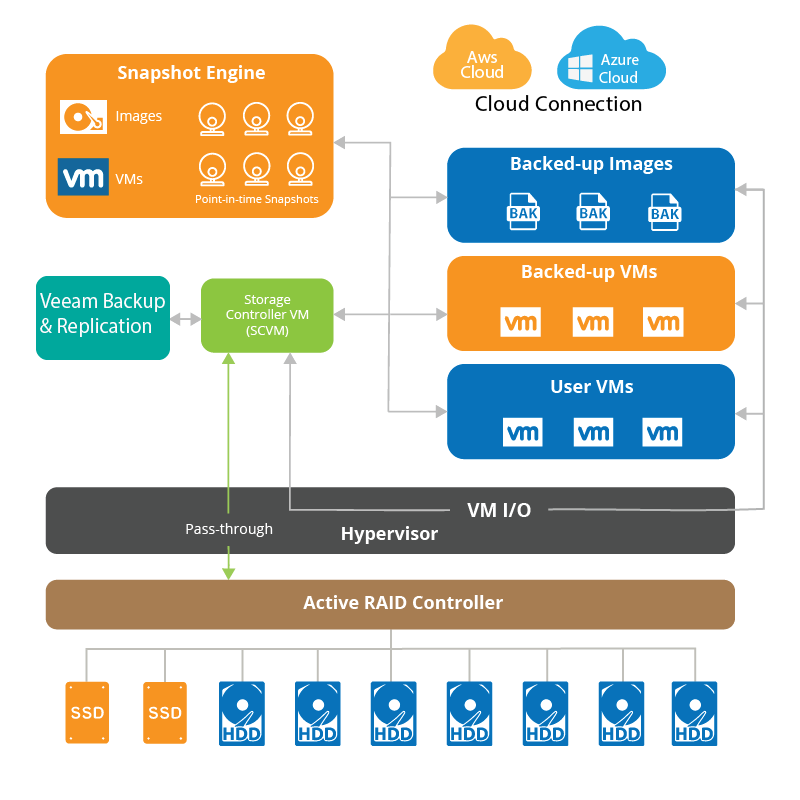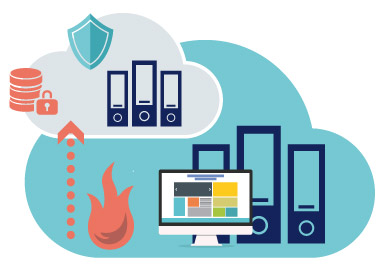One of the simplest and cost effective ways of dealing with this challenge is through the use of cloud enabled backup or cloud backup services and disaster recovery appliances like the StoneFly DR365 appliance. Cloud appliances are becoming very popular amongst IT administrators when it comes to the protection of both physical and virtual servers compared to in-house solutions.
- They are easier to manage
- Require no capital investment
- Eliminate the need for tape
- Offer a lower total cost of ownership
More importantly, cloud backup appliances offer a number of important recovery process advantages when compared to conventional off-site backup methods.
Workings of Cloud Backup Disaster Recovery
Cloud backup and backup appliances are taking the world by storm as they constantly help in safe and secure data storage. There have been meaningful partnerships over the years between the likes of big companies like Microsoft Azure, Amazon AWS, Veeam and StoneFly to provide the world with intact disaster recovery in the cloud. The workings of such intricate disaster recovery are not alien to understand.
Using StoneFly as a cloud backup provider, the client’s own data center can also be used to host a backup appliance, the appliance then uploads this data to a remote data center (at minimum two copies of the backup data are preserved). One copy is kept locally for fast recovery; the other is kept offsite for major disasters. This is what is known as disk to disk to cloud (D2D2C). One of the main advantages of having an on-site copy of data using StoneFly DR365 backup and replication appliance is the speed of recovery, since this eliminates the need to download large volumes of data over an internet connection.

When it comes to unplanned downtime, recovery time is critical, if the primary file server crashes, all productivity in the company can come to a complete stop. Since a cloud backup appliance is already installed and configured in your internal network, this device can immediately be mounted as a temporary storage server. Within a few minutes, all users will get access to their files directly from the appliance; until the production server can be brought back online. In the event that a more complex system such as a data center or email server experiences a major failure, a system image can be hosted directly on the appliance until you are ready to bring your production servers back.
Finally, there might be some scenarios such as major natural disasters where rebuilding locally simply isn’t an option. In such cases, StoneFly gives its customers the option of temporarily hosting the service as VMs in its very own private data center, until a new primary production site can be made available. StoneFly’s cloud disaster recovery appliances not only offer fast recovery times, but also provide the flexibility to adapt whatever emergency the customer requires.
The use of cloud enabled off-site backup appliances like the StoneFly DR365 offers more than just disaster recovery. An unplanned downtime of your critical business systems has the potential to seriously impact your business. Cloud backup alongside a disaster recovery appliance like the StoneFly DR365 can provide a lot of value to any organization.










